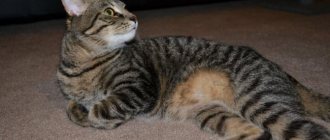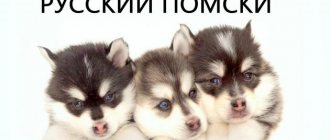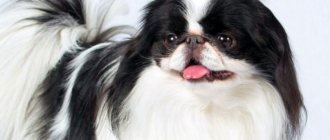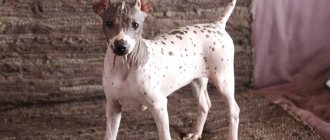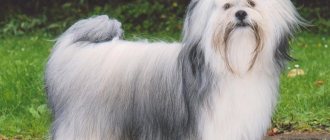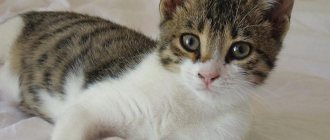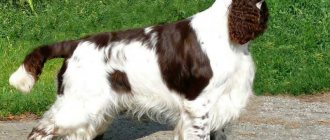With their appearance, Lyka cats created a sensation in the world of felinology. They are not the result of a genetic experiment, as one might think. Lykoi appeared as a result of natural mutations of a short-haired cat. In character and habits, they are no different from ordinary domestic purrs. Breeders claim that, despite its external resemblance to werewolves, the cat will definitely not begin to turn into a full moon.
Origin story
Translated from Greek, the word “Lykoi” means “werewolf”, “werewolf”.
It's scary, isn't it? But in fact, if you dig deeper, the reviews about these cats are only positive. And there are many of them. Their habits are identical to those of other cats, but in their devotion and hyperactivity they are very similar to dogs.
The story of the birth of the Lykoei is as follows: in 2010, on a farm in Virginia, an ordinary domestic cat gave birth to two unusual-looking babies: the hair on their bodies grew unevenly, leaving some areas almost bald.
Farm owner Patti Thomas, deciding that these kittens were distant relatives of the Devon Rex or Sphynx, called Gobble breeders, well-known in those places. The Gobble couple became interested in the babies and, having studied all the available information and the results of DNA tests, came to the conclusion that neither rexes nor sphinxes have anything to do with them. And this was already an unambiguous indication of the emergence of a new breed.
As it turned out, a similar incident occurred in Tennessee. A random natural mutation made it possible to bring new cats onto the international stage, which were initially called opossum cats (due to the similarity of the coat with the hair of opossums), but then they changed their name to a more original one - Likoi. You won’t know who was the first to come up with the idea of connecting mysticism, but it’s hard not to agree that these cats deserve a bright and memorable name.
In 2012, the breed was officially recognized by the TICA association. Since then, only those who support the activities of TICA and agree with its charter can engage in breeding werecats. The breed belongs to the “developing” category, i.e. it is not yet established and is being studied.
Health
The Likoi cat is a desirable and unattainable pet for many connoisseurs of exotic breeds, however, experts recommend taking your time and thinking carefully about the decision. Due to the lack of knowledge of the breed, breeders and breeders do not guarantee the absence of genetic diseases. Geneticists are intensively looking for “gaps” in the DNA of animals and, fortunately, so far to no avail, perhaps Likoi really belongs to the breeds with “heroic health”.
Standard
Likoi weighs little: the female is only 2-3 kg, the male is slightly larger - up to 4.5 kg.
| Standard | Description |
| Head | Wedge-shaped, with smooth features. The muzzle is small, the chin is rounded, the nose is wide and slightly elongated, its tip is directed downward. The forehead is sloping. The whisker pads are small but fleshy. |
| Ears | They are large, their tips are pointed, and their base is wide. Widely spaced. |
| Eyes | Open, almond-shaped, piercing, attentive gaze. Outlined in dark. The iris can be blue, green, gray, but those with yellow and gold eye colors are more highly valued. |
| Torso | Strong, flexible, dexterous. The limbs are of medium length, the fingers are long, thin, and the pads are dark. |
| Tail | Thin, short, tapering towards the end. The neck is medium size. |
| Wool | The coat is atypical for cats. The guard hair is loose, but very soft and pleasant to the touch (like human hair). It can be of medium length or very short. There is no undercoat. In the area of the muzzle - around the nose and eyes - there is no hair at all. |
Researchers who studied the fur of Lykoi found that they were missing some important hair follicles, and those follicles that were present lacked a balance of important components. This is a natural mutation. But the “plus” is that the change in coat pattern in Lykoi cats is several times faster than in cats of other breeds.
Physical characteristics and character traits that do not allow animals to participate in exhibitions:
- blindness;
- finger mutation, polydactyly;
- creases, knots or other defects in the tail;
- strabismus;
- cowardice, aggressive behavior;
- body completely covered with fur;
- different coat color;
- undescended testicles.
Are you interested in the breed and would you like to buy a kitten? Get ready to face difficulties. There are only 3 officially registered nurseries in the world: in Michigan (USA), Oklahoma (ibid.) and Moscow (Murmulet nursery). There are private breeders in France, the USA and Canada. Three-month-old toddlers (kittens younger than this age are not put up for sale) are expensive: blue and bicolor kittens (which are considered not so spectacular) are estimated at about 100,000 rubles, and the so-called roan color (with an abundance of white hair on the body) - from 160,000 rubles and above .
Purchasing a kitten
It is almost impossible to buy a Lykoi kitten, since due to its small numbers the breed is bred only in three registered nurseries. Two of them are located in the USA (Oklahoma and Michigan) and one in Russia (Murmulet elite cattery, Moscow). The future owner chooses the gender of the kitten according to his taste.
Kittens are offered for sale at the age of three months. Before this, the breeder gives the baby a primary vaccination and registers it with TICA, where he receives a metric guaranteeing the purity of the breed. Subsequently, the owner exchanges it for a pedigree. The cost of a roan kitten starts from 160,000 rubles, non-standard bicolor and blue kittens are not so spectacular, so they cost less - from 95,000 rubles.
Character and behavior
The frightening appearance of the Lykoi does not fit in with their character. These are very kind and affectionate creatures who adore members of their family - the pack in which they grow up. But they tolerate other animals rather than truly love them. This is especially true for large breed dogs and big cats. If other animals claim dominance in the house, fights cannot be avoided. Likoy will perceive them as rivals and constantly provoke them into a showdown. And small animals such as birds and fish are exclusively hunted.
Remember the following: the Lykoi are very wary of strangers at first, and if they notice a threat (or think that the person wants to cause harm), they can rush at him without hesitation.
Likoy lying on the sofa for hours is from the realm of fantasy. They are curious to the extreme, they love to climb higher and get deeper, rustle all the packages on their way, sniff and scratch all the boxes and cans, are interested in the food on your plate and the drops that you put in your nose. It is useless to brush them off, and to scold them is dangerous. Lykoi are very offended by the raised tone and poking, hide and refuse to come out for hours.
Lykoei expresses their activity in games and running around. If you have explained to your kitten since childhood what can and cannot be done, you will not have any problems in the future. Moreover, if you take care of toys in advance, and even better, give your child a play corner in the apartment.
It is not necessary to buy a bulky and expensive design: a small one is enough. A couple of hammocks, a ladder, a closed house higher up, a rope, a soft place where you can sharpen your claws to your heart's content - that's all. You can buy the complex or make it yourself (there are many detailed instructions on the Internet).
Lykoi are excellent hunters. Not a single butterfly or fly will fly past your cat's little nose, not a single insect will run past. In nature, Likoya will be a real expanse: if you have a dacha or a house on the ground, take your Likoya there for a walk more often. He will enthusiastically catch insects, chase lizards and mice, wallow in thickets of grass and climb trees.
But it is not recommended to leave your pet unattended: a curious creature can easily go out to explore a neighboring area or street, and then move on. If you want to take your cat into the forest, be sure to wear a collar and leash.
Does your pet like to go for walks?
HomebodyWalking on the street
Regarding training: so far this issue has been studied little. The first reviews were quite contradictory: some owners claimed that, despite being human-oriented, Lykoi do not want to learn commands, others - that they carry out light commands like “carry the ball” easily and without problems. It can be assumed that something can be taught in a playful way. But specifically in the game, without using punishment, but only with encouragement.
Mythology of Japan. Demon cats
Neko is a Japanese word that translated into Russian means “cat”. Local residents call all cats this way, without exception, but in the West this word is used in relation to animals that have supernatural abilities and are heroes of various legends.
Cats appeared in the Land of the Rising Sun almost simultaneously with Buddhism. The thing is that these animals were necessary to protect the temples from rodents, who were not averse to profiting from the food stored there and could spoil valuable manuscripts.
Oddly enough, until a certain time, not everyone could have their own cat. These animals were considered a symbol of wealth and prosperity, as a result of which, in addition to Buddhist temples, they could only be found in the imperial palace and among some members of the aristocracy.
The situation began to change only at the beginning of the seventeenth century, when the country was overrun by hordes of mice that destroyed the cocoons of silkworms. Frightened by problems with silk production, the emperor decided to release some of the cats from the palace, after which they quickly spread throughout all prefectures. However, when the number of furry animals increased, not all Japanese were delighted.
At the beginning of the 17th century, the Japanese used cats to kill mice and rats that threatened silkworms. Selling and buying cats was illegal, and the animals roamed the cities freely. Cats that were caught drinking lamp oil (it was made from fish oil) were considered bakeneko.
Many considered the cat to be a dark animal due to its carnivory and special sensitivity to the smell of decay. As a result, folklore was replenished with a number of stories in which they were associated with the afterlife and werewolves. Some parents even forbade their children to play with cats.
A way was even found to link the devotion of cats and their connection with the other world. This is where all the legends originate, according to which animals could turn into demons to help their owner/mistress or to commit an act of revenge.
It is believed that white cats symbolize purity and innocence, black cats ward off evil spirits, red cats bring wealth and prosperity, and three-suit cats bring good luck. There is a nuance here. It is three-suited Mikeneko cats that bring good luck, while cats on the contrary can turn into Bakeneko and cause a lot of trouble.
Who are Bakeneko and why do they cause trouble?
Care instructions
Lykoi can be compared to babies, because they require careful and regular care, but, alas, they cannot really take care of themselves.
Bathing
Their skin is similar to the skin of sphinxes: it also secretes a viscous secretion and “sweats.” If you don't wash it off, it starts to smell unpleasant and stain everything around you. Every month the cat needs to be bathed: in warm water, using a special mild detergent. Human gels and shampoos often cause diarrhea, rashes and irritation.
“Doctor ZOO”, “Clandestine”, Cliny “Deep Cleaning” have proven themselves well: these are soft budget products that wash away dirt well and remove unpleasant odors. Dry the cat with his personal soft towel, and then dry it with a hairdryer or near a radiator.
Lykoei skin quickly “burns” in the sun: literally an hour or two in the sun and hello, reddened and painful skin! Therefore, do not allow the animal to lie on the open balcony.
If you live above the first floor, install special strong nets on the windows. Likoy, in the excitement of the hunt, will easily jump out of the window. Imagine if this is the eighth floor?
They shed profusely and often, so be prepared for daily brushing and frequent cleaning of the house.
Claws
His claws are trimmed every week: they grow very quickly. This does not cancel the purchase of a quality scratching post.
Eyes
The ears and eyes are looked after like the rest. If the eyes do not “flow”, then there is no need to touch them. If you notice pus in the corners or the cornea turns red, take the animal to the veterinarian as quickly as possible. Wax from the ears is cleaned with a cotton pad soaked in chlorhexidine or a piece of soft cloth. No lotions or water should be poured inside: this will provoke severe internal inflammation of the ear!
Teeth
Teeth are brushed once a week if the cat eats dry food, and 2 times if he eats natural food with a sufficient amount of meat. Only special toothpaste is suitable: with glycerin, triphosphate or carrageen in the composition. Brush: a regular baby brush (with trimmed bristles), a finger brush, or a piece of gauze wrapped around your finger.
You need to get used to cleaning your face from an early age. If your pet is categorically against the procedure or you do not dare to brush his teeth yourself, contact a veterinary clinic. There they will perform mechanical (under local anesthesia and sedative) cleaning or laser cleaning (a more gentle, but also more expensive procedure).
Lykoi price
about the price of the face . It's not easy to buy such a pussy. If you have an uncontrollable desire to have a werewolf kitten, you will have to go to America. That is, where this breed was formed.
Only there they can sell real lykoi, and even then, not immediately, but only after the turn comes. The breed has just emerged, the demand is huge, but the supply is still insufficient.
Each kitten is kept under close supervision. And we can only guess what price the breeder will ask for such a treasure. And if suddenly someone is wildly “lucky” to buy a unique animal at the market or in a pet store, you can be happy for the purchased kitty, because outbred pussies also need an owner and a warm home.
Catering
Their diet should be balanced and satisfying: their metabolism is such that they want to eat often and in large quantities. And bare areas of the body contribute to accelerated heat exchange and a large waste of energy. But by overfeeding your cat, you will cause him to develop obesity, heart problems and diabetes.
Usually cats are fed 2 times a day. Likoev should be fed 5-6 times, giving small portions (taking into account the general weight recommendations). You cannot mix natural food and ready-made food: choose one. Otherwise, stomach problems cannot be avoided.
Likoi drink only water: clean, fresh and at a comfortable temperature (not ice, but not hot either). You should wash the bowl and pour fresh water in the mornings and evenings: squeamish cats will not drink dirty liquid.
Natural products
What should be on the menu at your lykoi? Since the cat is an obligate predator, meat is the determining product in its diet.
- Allowed: beef (nutritious, but a bit heavy), rabbit (hypoallergenic), poultry (chicken, turkey, quail), pork (shoulder, fillet, neck - small pieces), horse meat (nutritious and hypoallergenic), nutria (rich in vitamins), kangaroo meat, crocodile meat, snakes, mice, day old chicks. The meat is served raw (previously doused with boiling water), in small pieces, mixed with porridge or vegetables.
- Offal: heart, liver (boiled), ventricles, cartilage, necks, heads, tongues, lungs, testes, kidneys, spleen, tripe, udder.
- Fish: flounder, cod, haddock, navaga, pink salmon, herring, trout, carp, salmon, ivasi, omul, sockeye salmon. It is better to boil it, removing the fins and heads. Farmed fish are often laced with drugs. You shouldn’t buy it for either your cat or yourself.
- Cats get their fiber from vegetables. It helps the digestive tract function. It is allowed to give zucchini (raw and boiled), beets (boiled), cauliflower, broccoli, carrots, spinach. Many people enjoy gnawing on radishes and cucumbers. From fruits: melons, watermelons, pears, apples.
- Dairy products: biokefir and bifidokefir (fat content - 2-4%), low-fat cottage cheese, hard cheese, fermented baked milk, natural yogurt, sour cream diluted with water. If a cat has been drinking cow's milk since childhood and does not have a negative reaction (diarrhea, vomiting), you can continue to give milk.
- Boiled egg yolk and quail eggs.
- Porridge: rice, buckwheat, oatmeal, pearl barley.
You should not give smoked, rotten, salted, fried, smoked, spicy or fatty meat. It is forbidden to feed wild bird meat (almost always infected with parasites) and lamb (poorly digested).
Recommended food
If you want to feed Lykoya with ready-made food, choose the Holistic line. It includes the following foods: Riverwood, Gather, Go Natural. Holistics deserve their high praise due to their good composition. Super-premium food is somewhat lower in quality, but cheaper. The rest - premium and economy - are poor in composition.
Below are the recommended holistic class foods. Links with the names of the food are clickable, on them you can, within our website, get acquainted with the descriptions of the food and read reviews from owners of Likoi cats.
| Holistic | Holistic | Holistic |
| Acana | Nutram | Primordial |
Breeding Features
First, the owner should purchase a pair of Lykoi, then join a special club for breeders. In the case of this particular breed, only entry into TICA will be possible. A mandatory rule is participation in exhibitions, since without this the female will not be officially allowed for breeding.
Choosing a partner
If the future breeder only has a female, he should find a suitable partner for her. The selection criteria are the same for all cat breeds:
- pedigree;
- health;
- the possibility of concluding an agreement with the cat’s owner, which will stipulate all the points regarding the rights of future kittens.
Mating and birth
A cat is allowed to be bred at the age of 1 year, when puberty has set in, a cat - from 14 months. To give birth to high-quality offspring, it is recommended to skip the first heat.
Lykoia females tolerate pregnancy well and can give birth up to 5 times a year, but the cat herself suffers from this (her body only works for pregnancy and feeding) and her future offspring.
Therefore, it is recommended to breed 1-2 times a year to allow the female to fully recover after giving birth. At the first lambing, a veterinarian should be present to provide the necessary assistance to the mother cat, if necessary.
Castration and sterilization
The owner of such a rare pet as the Lykoi should not rush to spay or neuter him, since the number of representatives of the breed is too small. The owner is advised to continue breeding. Mating of a purebred animal is permitted only with a partner of the same breed.
Females of any breed are sterilized at the age of 7 to 12 months, males - up to 1.5–2 years. Young animals tolerate the procedure more easily. In any case, consultation with a veterinarian is required before surgery.
Photo gallery
Below are photos of cats of the Likoi breed.
